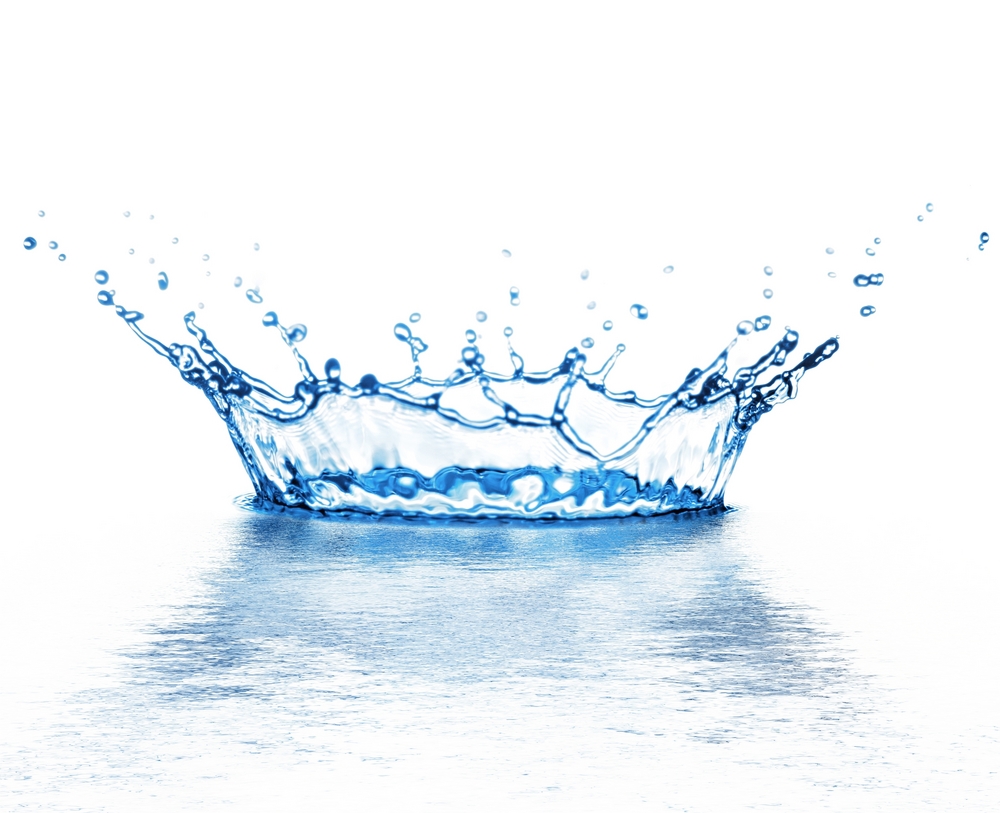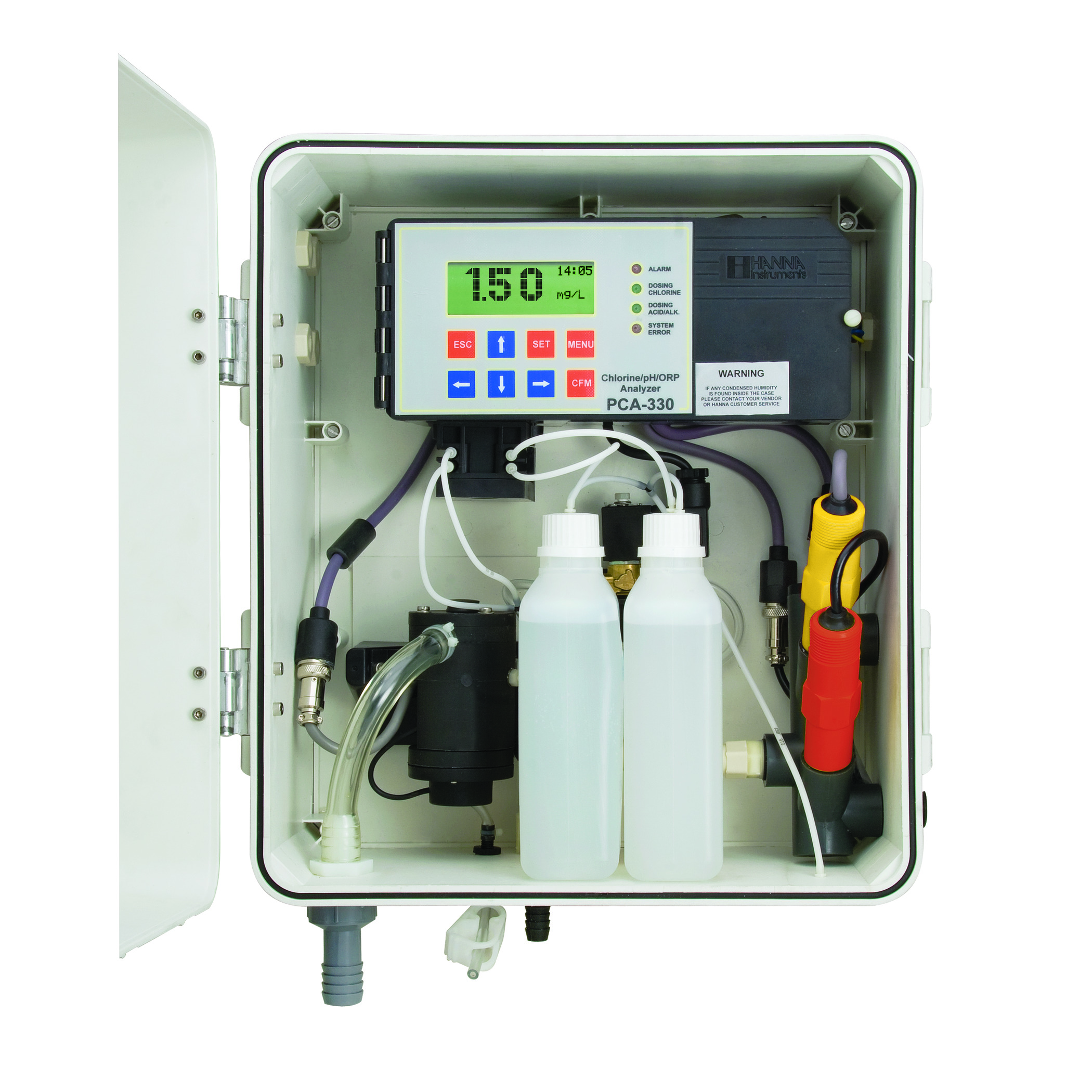Chlorine
From drinking and wastewater treatment to pool and spa sanitation, monitoring chlorine levels has an important bearing on public health as well as ROI and efficiency for heating system and industrial applications.
As one of the oldest and most common forms of disinfection, chlorine improves water quality by destroying disease-producing microorganisms, and by reacting with other organic and inorganic substances. Chlorine levels must be actively monitored to ensure sufficient chlorine is present for disinfection, as well as to control adverse effects such as taste, odor, and potential reactions with organic matter to form harmful disinfection byproducts.
Chlorine is a strong oxidising agent that destroys mostly organic pollutants and bacteria and can combine with nitrogen containing compounds, forming chloramines. When dosing chlorine for disinfection, only a portion of the dosed chlorine remains active to actually continue the disinfection process.
DPD Colorimetric method
The PCA Analysers uses DPD Colorimetric method in which N, N-Diethyl-p-phenylenediamine indicator and a buffer are mixed together with the sample. The resulting chemical reaction causes a magenta color to form in the presence of chlorine. The color intensity is proportional to the concentration. The color intensity is measured photometrically (light source at a specific wavelength and a photodetector) and converted to chlorine concentration, in mg/L, which is displayed on the front panel. The sampling interval for chlorine measurement is adjustable from 3 to 90 minutes. The PCA has a dosing relay for the addition of chlorine by a dosing pump or chlorine generator when a reading is below the programmable set point. The technology used by the PCA for chlorine measurement is the same as that found in portable and benchtop colorimeters providing for consistent results when performing process verification with one of those types of meters.
Amplified pH electrode
The PCA Family also uses the HI1005 amplified pH electrode with a built in pt100 temperature sensor and matching pin to measure both pH and temperature. The built in amplifier and matching pin provide for exceptional performance against any electrical noise generated by pumps and motors.
Analog output
The PCA340 features two selectable 0-20 or 4-20 mA signal output that are scalable for the transmission of readings to external recording devices. The analog outputs can also be set for dosing and used with dosing pumps that accept a 4-20 mA analog input. The analog outputs can be used for any of the three measured parameters.
PCA Series Controller FEATURES/BENEFITS:
Backlit LCD Display
- The PCA Family has a backlit display that is easy to read from a distance and allows for up to three parameters to be displayed at a time.
Nema 4X Protection
- The PCA Analysers are enclosed in waterproof casing for superior protection against the elements. The front door of the case has a window for the measurement display while also shielding the DPD reagents from UV light to prevent premature degradation.
DPD Chlorine Measurement Method
- The DPD colorimetric method is one of the most common and reliable methods to measure chlorine. The PCA Family can use either free or total chlorine reagents and allow for 16, 000 measurements to be performed.
Colorimeter Diagnostics
- Advanced diagnostics allow for easy troubleshooting of the colorimeter. In the setup menu it is possible to select an option that allows the user to determine the difference between a dark read (LED off) and a blank read (LED on). These Analuzers also automatically performs this check in order to determine when to alert the user that the sample cell needs to be cleaned.
Reagent Reminder
- The PCA family has a reagent reminder feature to alert the user when the reagents are running low. When the reagents are changed the counter is reset and the meter automatically tracks the number of readings performed.
Amplified pH/Temperature Probe
- An integrated pt100 temperature sensor allows for automatic temperature compensation of pH measurements and allows for monitoring temperature as well. The built in amplifier and matching pin provides for exceptional performance where other probes fail when placed in line with pumps and motors.
Data Logging
- The analyzers can store up to 3500 readings (at least 7 days worth of records when set to a a3 minutes sampling interval) that can be reviewed or downloaded to a Windows compatible PC using the HI92500 software and the RS485 serial port. Logged records contain the date time and reading of all parameters measured along with any alarm status.
GLP Data
- The GLP data allows for the user to review the data and time for the last Chlorine and pH calibration.
Digital RS485 Output
- The PCA Family has a RS485 digital output that allows for connection to a Windows compatible PC running the HI92500 software. The software allows for remote monitoring, review of logged data, events and errors, and executing setup options.
Two Analog Outputs (PCA340)
- The PCA340 features two selectable 0-20 or 4-20 mA signal output that are scalable for the transmission of readings to external recording devices. The analog outputs can also be set for dosing and used with dosing pumps that accept a 4-20 mA analog input. The analog outputs can be used for any of the three measured parameters.
Two Dosing Relays
- The dosing relays of these analyzers can be connected to a pH and/or chlorine dosing pumps. The chlorine relays are proportionally controlled while the pH relay can be set for on/off or proportional control. The proportional controloffers very fine control of doing to prevent any
overshoot and wastage of chemicals.
Alarm Relay
- One SPDT alarm relay is provided that can be activated by adjustable upper and lower chlorine, pH and temperature limits.
Error Relay
- One SPDT error relay is provided and is activated when an error is present including a problem with the colorimeter such as when the reagent counter has reached zero, or when a reading is outside the range for a measured parameter.
Warning Messages
- Error messages are displayed when the reagents are expired or low and if the colorimeter cell needs to be cleaned.
All prices are inclusive of GST and not all items are stock items, if you require an immediate solution please send an email to sales@hannainst.com.au or call us on (03) 9769 0666.
Free standard delivery: We offer free delivery within Australia on orders over $100, typically arriving within 5 to 7 days. Delivery times may vary depending on the courier service and the recipient's location. Free shipping is not available with other offers or discounts.
Same-day despatch: Place your order before 1 PM Monday to Friday for same-day despatch. Delivery times may vary depending on the courier service and the recipient's location. Subject to stock availability.
Please note that we do not offer shipping to PO Box addresses.









